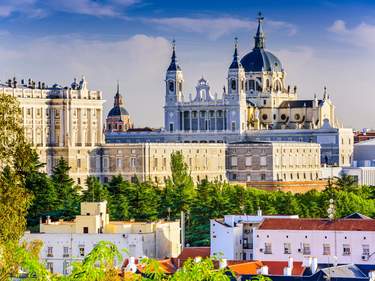How to spend 10 days in Spain
In addition to extending our suggested ways to spend a week in Spain, here are some extra ideas that deliver more varied experiences across a 10-day vacation.
Uncover classic Spain – Madrid, Andalusia and Barcelona
Spend your first three days in Madrid, kicking off with exploring Puerta del Sol and Plaza Mayor, rounded off with an evening tapas meal in La Latina.
After visiting the Royal Palace, Prado Museum, and Retiro Park on your second day, take a day-three trip to Toledo to marvel at its medieval architecture.
The middle segment of this suggested way to spend 10 days in Spain will see you travel to Seville.
While here, you’ll also want to visit the Real Alcázar, Seville Cathedral and Plaza de España, and take a day trip to Córdoba.
Rounding off your trip in arty style, head to Barcelona for three full days of exploration.
You should have time to visit the Gothic Quarter, stroll La Rambla, and explore Sagrada Família and Park Güell.
We also suggest heading to the Picasso Museum and Boqueria Market, and allowing time for Barceloneta Beach.
Editor’s tip: our customizable Spanish Discovery itinerary covers Barcelona, Seville and Madrid.
Explore the Basque Country, Rioja and Galicia
Covering gems of Northern Spain, this suggested 10-day itinerary begins in Bilbao, where you’ll want to visit the Guggenheim Museum and Casco Viejo (Old Town) before taking a day trip to scenic San Sebastián, where beaches and a charming Old Town await.
Next, transfer to La Rioja to visit vineyards in the wine villages of Haro and Laguardia.
Santiago de Compostela is another great place to include on this itinerary, as is Rías Baixas, which is known for its beautiful coastline and seafood.
You could also head to A Coruña or Vigo, and allow time to relax on the beach and take scenic boat tours.
See the best of Southern Spain
Offering a fabulous blend of culture and coast, this suggested way to spend 10 days in Spain starts in Seville, where you can explore Barrio Santa Cruz, enjoy a flamenco show, visit the Real Alcázar, Seville Cathedral and Plaza de España.
Next, take in the sights of captivating Córdoba before going to glorious Granada. Here highlights include the Alhambra, Generalife Gardens, the Royal Chapel of Granada, and the Sacromonte district.
This diverse itinerary rounds off in Málaga and the Costa del Sol, where you can mix your schedule between visiting cultural attractions like the Picasso Museum and the Roman Theatre with relaxing on beaches.
Editor’s tip: to see the best of Southern Spain without the hassle of planning your trip, book our Gems of Southern Spain itinerary.






































